BIG’s Biosphere Will Add a Floating Birdhouse-Covered Room to Sweden’s Treehotel
Set in the picturesque woods of Harads in northern Sweden, the Treehotel has become internationally renowned for its unusual lofted architecture. Established in 2010 by Britta and Kent Lindvall, the bed & breakfast features unique guest huts suspended up to 20 feet above the ground with stunning views of the Lule river valley. Such esteemed architects as Snöhetta, Tham & Videgård Arkitekter, and Rintala Eggertsson have crafted treehouses in the shape of UFOs, mirrored cubes, bird’s nests, and more, providing visitors with truly unparalleled vacation experiences. Now, one of the world’s biggest architecture firms is joining them. Bjarke Ingels Group (BIG) of Denmark has designed Biosphere, the Treehotel’s newest accommodation, and it’s one of the facility’s coolest spaces yet.
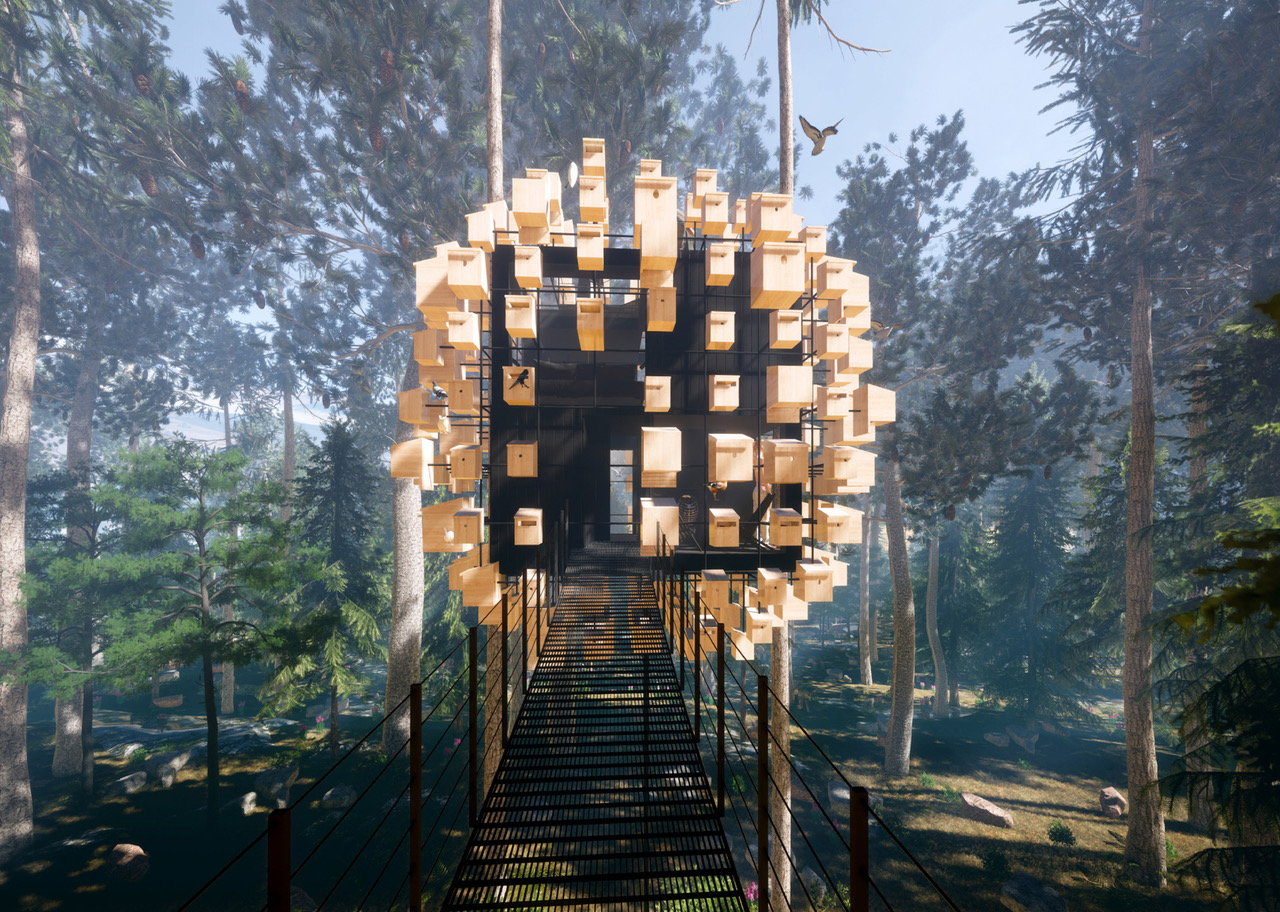
“I got to spend a few days and nights in some of the Treehotel rooms right before the pandemic, and left with a sense of rejuvenation from complete immersion into nature,” says BIG founder and creative director Bjarke Ingels. “I couldn’t help wondering if there was a way to take the immersion one step further – and almost instantly the idea of inviting not only the human visitors but also the resident bird and bat population to cohabit a spherical swarm of nests came to life. After our first conversations with Ulf Öhman from Norrbotten Ornithological Association we were relieved to learn that birds don’t drop where they nest – so there is hope for the glass to remain clear within this cloud of aviary architecture.”
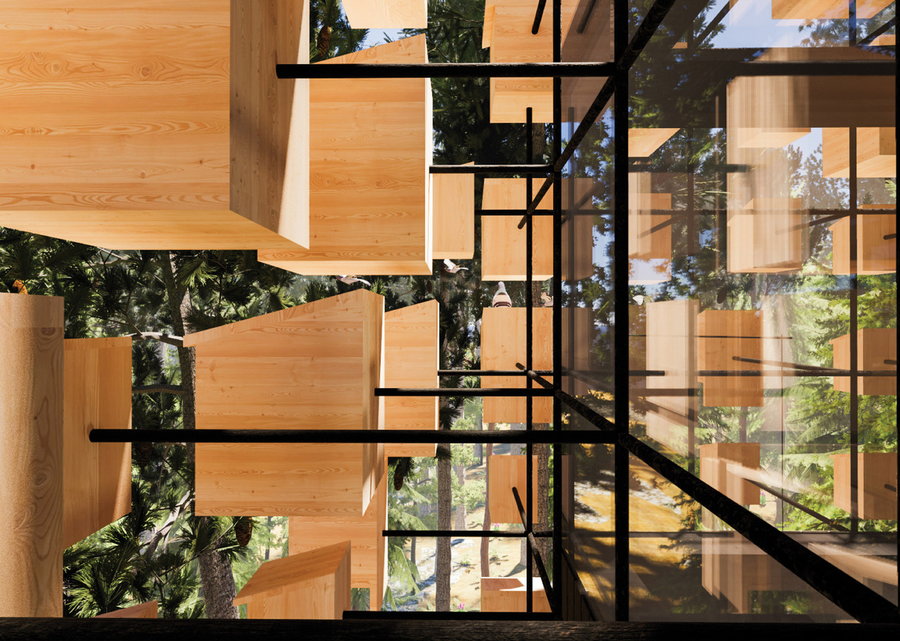
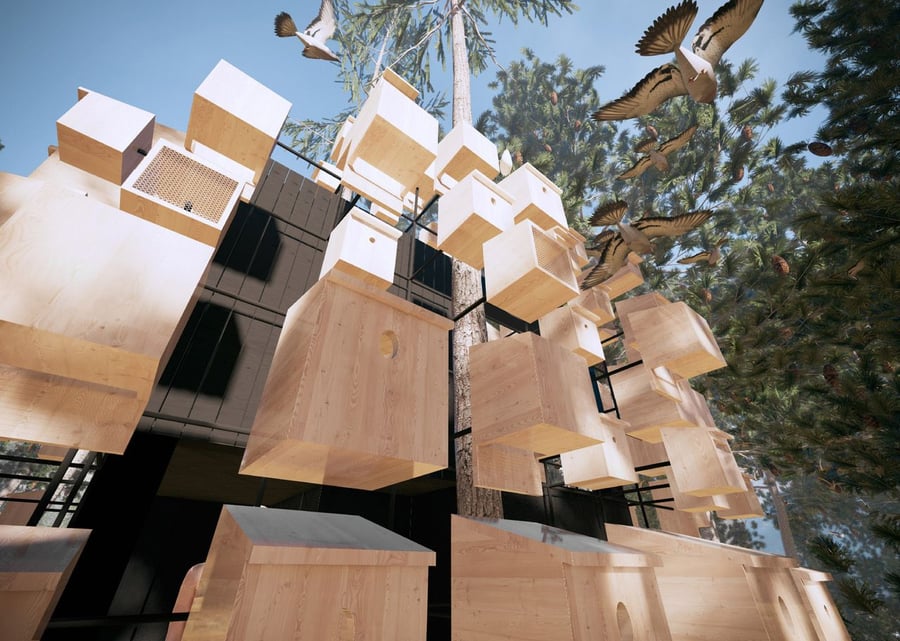
As the name suggests, Biosphere is a spherical suspended room that offers habitation not just to humans, but wildlife as well. BIG worked with Swedish ornithologist Ulf Öhman to craft an exterior that’s capable of welcoming up to 350 families of birds, strengthening biodiversity in the area. In addition to bird houses of various sizes designed to attract different species, there are bat houses, bee houses, and bird feeders. The treehouse is accessed by a suspended bridge stretching from the ground to the pine canopies.
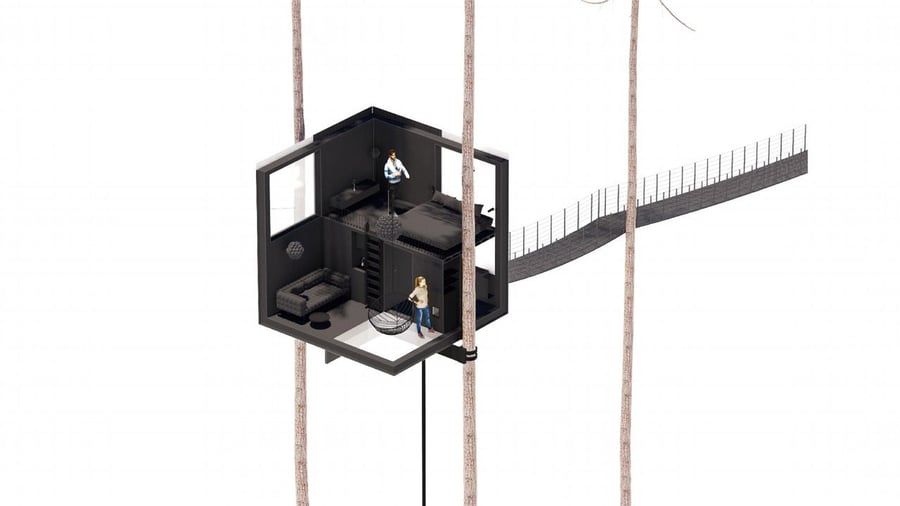
“Inventories in Norrbotten County, carried out both by us as ornithologists and by the County Administrative Board, show that a number of different bird populations are decreasing,” says Öhman, chairman of the Norbotten Ornithological Association. “Forestry has led to a. Reduced number of natural holes in trees where breeding birds nest. The installation of bird nests is therefore an important measure to take. Furthermore, climate change leads to the insect boom happening earlier in the year, and by the time the birds’ eggs hatch, the boom has already passed.”
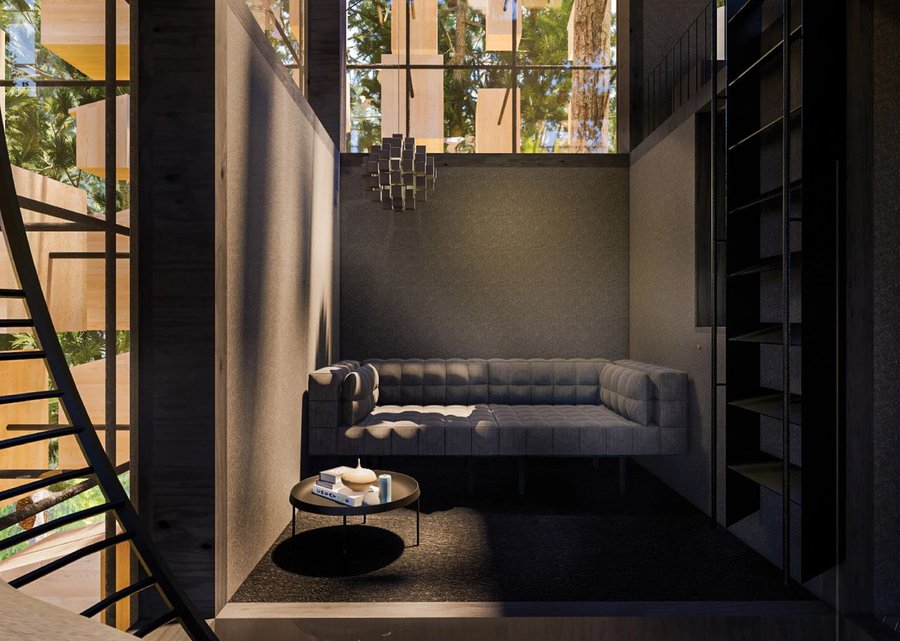
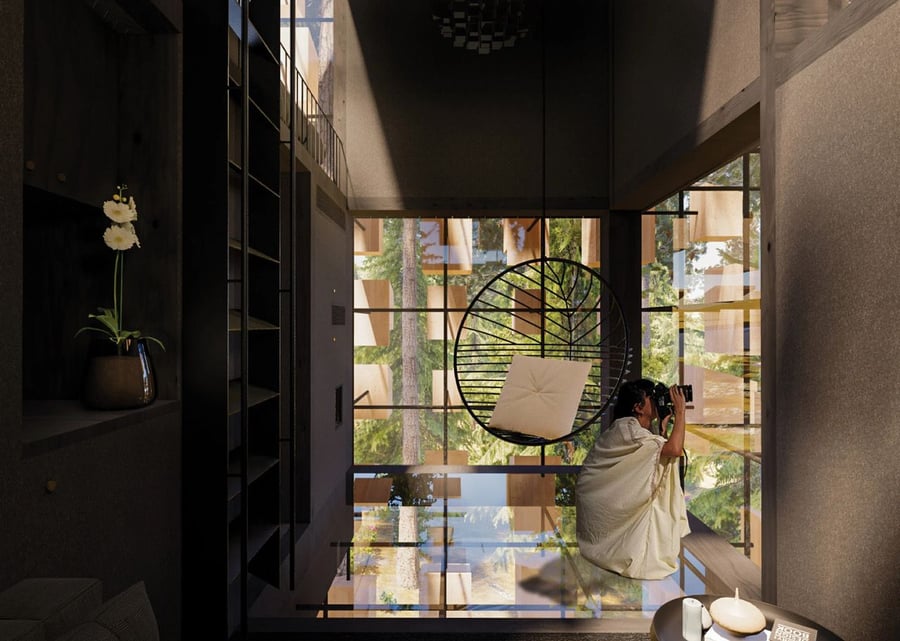
“Feeding is an important support mechanism for the birds that stay in Northern Sweden and require food during winter. Demonstrating the use of bird nests and feeding, not just at the Treehotel but for people to install near their own homes, is valuable. An initiative from Treehotel to take such measures may inspire their visitors to do the same.”
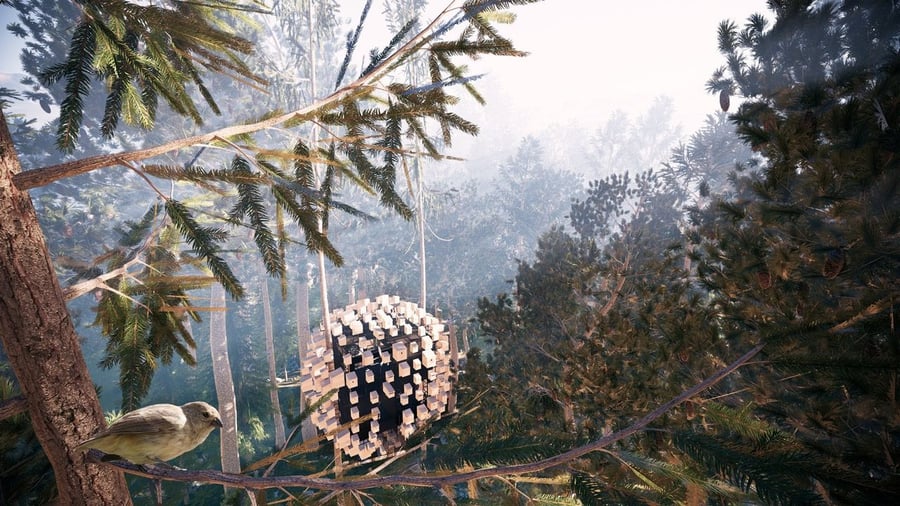
If you think the outside is cool, check out the interiors. While BIG decided to craft a comfortable space that emphasizes pragmatism and simplicity, the glass walls let guests watch as birds enter and leave the birdhouses attached to the exterior. It’s a birdwatcher’s dream, almost as if you could cozy up inside a tree trunk yourself and peer out at natural bird nests tucked within the branches.
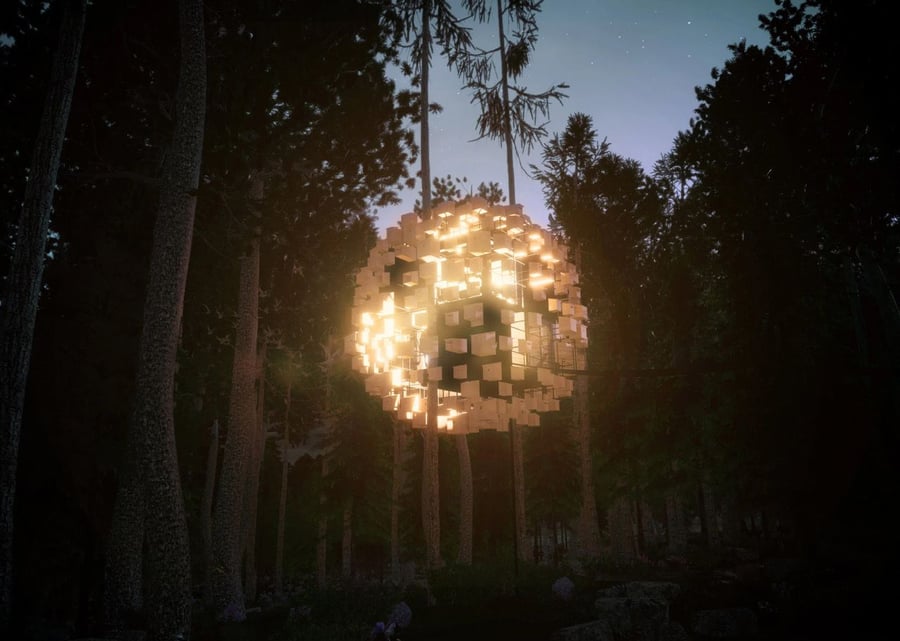
The checkered pattern of the bird houses allows glimpses of the forest outside and transmission of natural daylight. The room also includes a living area with a chair swing, a bathroom, and a lofted bedroom. These dark interiors are designed to direct visitors’ gaze outward instead of within. Even better, guests can climb up onto the roof for 360-degree views, giving them an intimate sense of immersion in nature.




